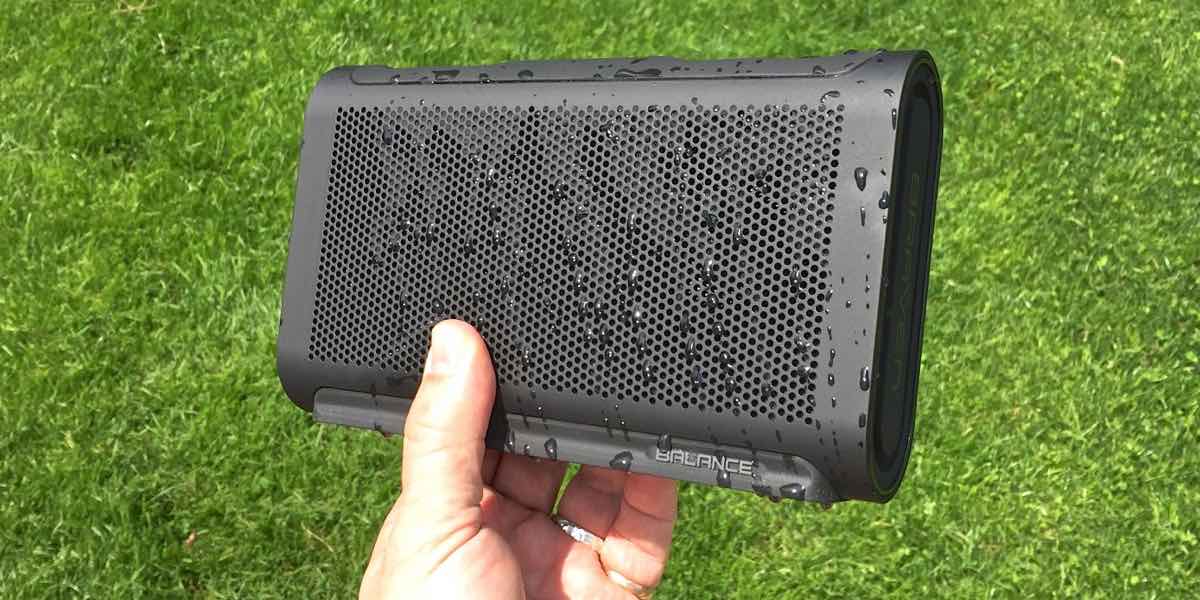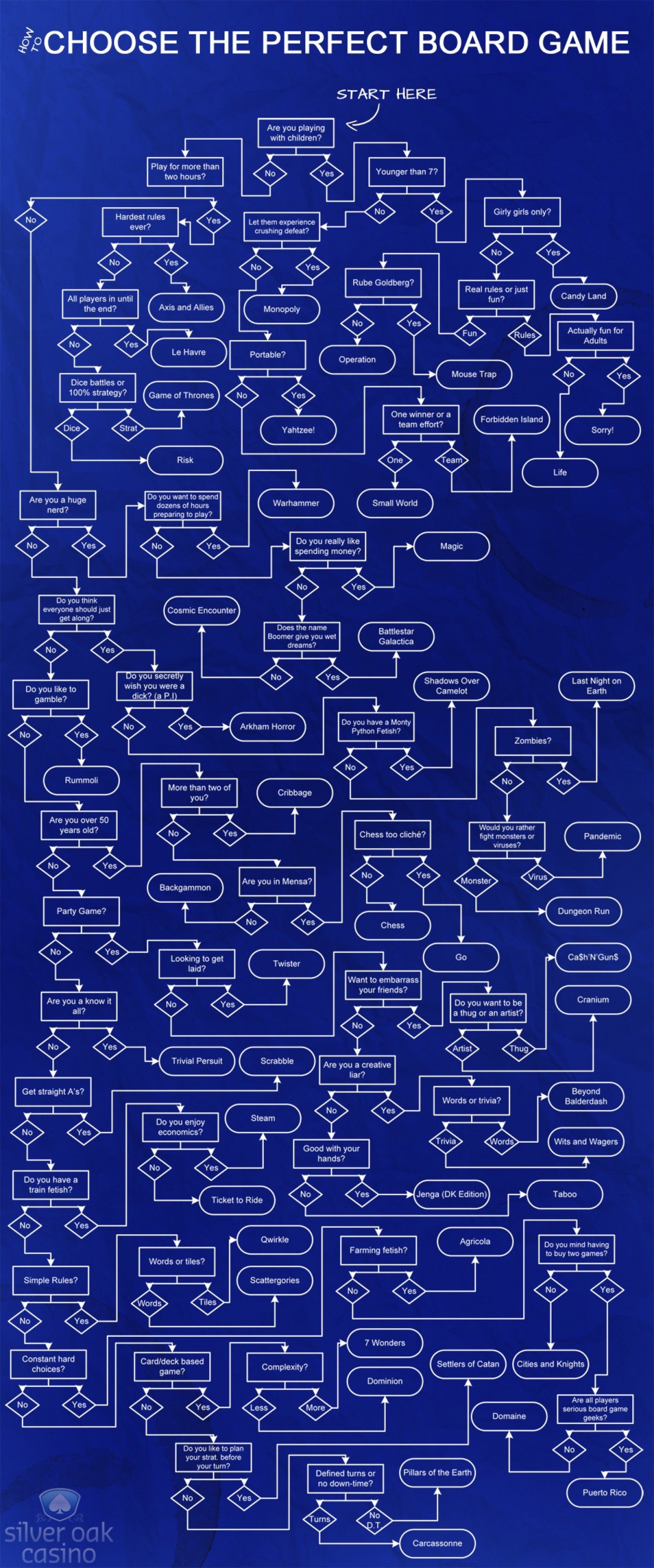Everyone wants to be the best gadgeteer, by building the best gadgets. Bid on parts to gain control of them, use them to build gadgets, and then use those gadgets to build even more gadgets.
At a glance: Gadgeteers is a game by Dan Letzring and Michael Cover for 2 or 3 players, ages 10 and up, and takes 30–45 minutes to play. It’s currently seeking funding on Kickstarter, with a base pledge of $19 for a copy of the game. The game uses a blind-bidding mechanic for gaining control of parts, and it’s family friendly but not just for kids.
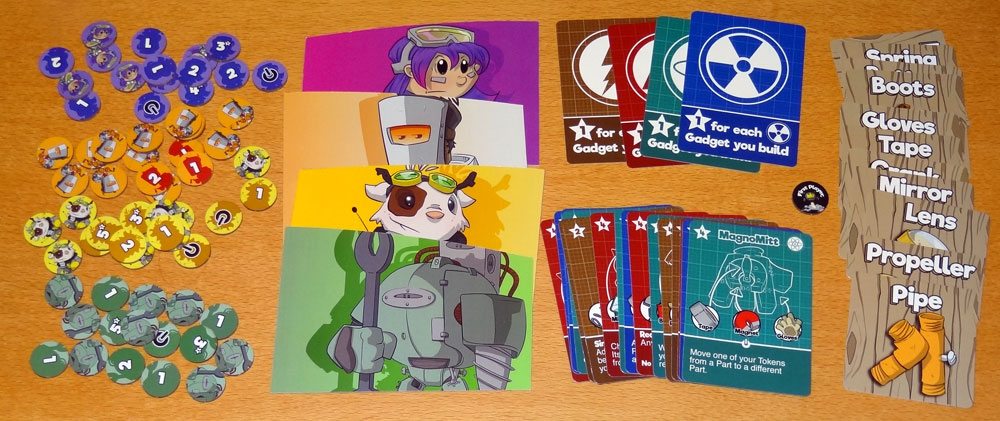
Components:
- 4 player screens
- 12 Parts cards
- 16 Gadget cards
- 4 Bonus cards
- 64 player tokens (16 per character)
- First Player marker
My review is based on a prototype, so I think the artwork is mostly finished but these are not final component quality. The game does come in a pretty small box, which makes it nice and portable. I do like the artwork on the cards—it’s a little cartoony and goes well with the wacky inventions you can build. The Gadget cards are made to look like blueprints, which is a nice touch.
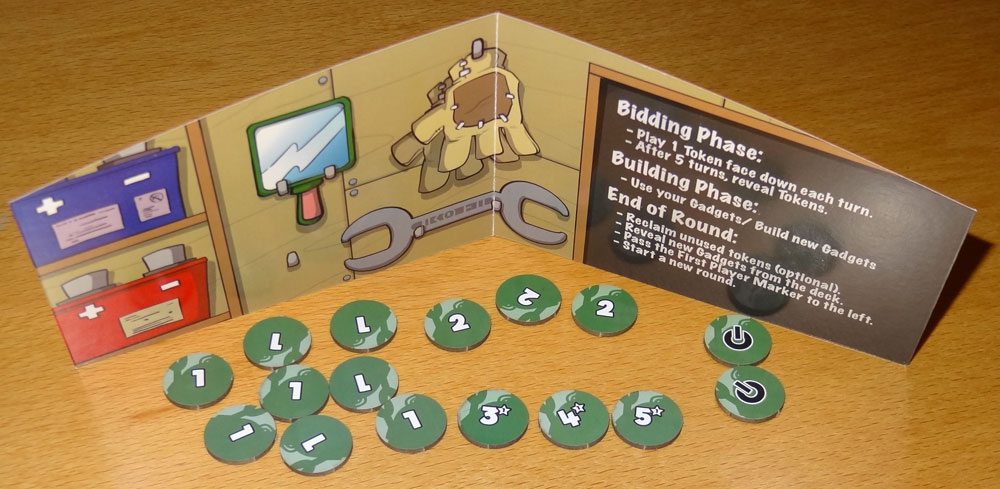
The player screens have a little player aid on the back side, and are designed to look like a workshop. Each player’s tokens have numbers (or a Power symbol) on one side, and the character image on the other.
Technically, there are enough components for 4 players, but designer Dan Letzring told me that they really felt that the game works great for 2 or 3 players, and is not really intended to be played with 4 players. The four sets of player components just let you pick a different character appearance. However, I have actually played with 4 players once because I wasn’t paying attention, and thought it was okay.

How to Play
You can download the rules and print-and-play files here, in case you’d like to try it out for yourself.
The goal of the game is to score the most points by building a collection of gadgets—each gadget scores points, plus you can earn bonus points for building gadgets matching your bonus card and by retaining your higher bidding tokens.
To set up, each player gets a player screen, the 16 matching tokens, and 1 bonus card at random—the tokens and card are kept behind the screen, hidden from other players. The 12 parts cards are shuffled and laid out in a square in the center of the table. Finally, the gadget cards are shuffled and some are flipped up in a row (one more than the number of players). The youngest player gets the First Player marker.
The round has a Parts Phase and a Gadget Phase. In the Parts Phase, players take turns placing their tokens on parts (face-down) until everyone has had 5 turns. At the end of phase, all the tokens are revealed. If you have a higher total in tokens than any other player on a part, then you control that part. (Power tokens do not contribute toward control of parts.)

In the Gadgets Phase, players take turns building gadgets and using special powers. To build one of the face-up gadgets, you must have control over all the requisite parts. If you do, remove all your tokens from those parts and claim the gadget card and place it in front of you. 1, 2, and Power tokens are returned to your supply behind your screen, and 3, 4, and 5 tokens are placed in the Junk Pile in the center of the parts cards. If you have a built gadget in front of you with a special power, you may use the power by recalling a Power token from any part—some gadgets have one-time-use powers, and some have reusable powers. You may use a special power and build a gadget in the same turn. If you can’t do either, you pass.
The Gadgets Phase ends when all players have passed. Refill the row of gadgets if any were built; if none were built, add one to the end of the row. Then, everyone has an opportunity to recall tokens from the parts: you may recall from any number of parts, but if you recall from a part, you must take all of the tokens on that part. The First Player marker is passed and another round begins.
If anyone builds their fourth gadget, the game ends at the end of that round. Add up points from your gadgets, bonus points from your bonus card, and score 1 point for each of the 3, 4, and 5 tokens that you didn’t use. Highest score wins, with the tie going to player with control of the most parts.
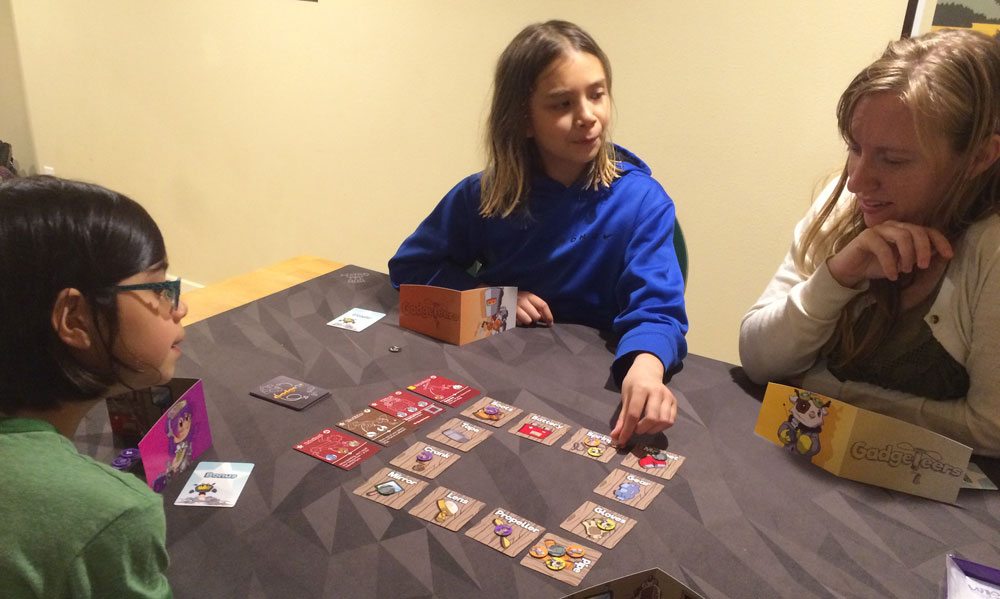
The Verdict
Gadgeteers is a pretty cool small-box game with a little bit of bluffing and negotiation in it. The available gadgets usually have overlapping parts, so there will be conflicts when everyone wants the magnet or the crank, even if they’re building different gadgets. Since the bidding is done face-down, you never know exactly how much somebody is committing to a part until they’re revealed. I like the fact that you can also throw your two Power tokens in as bluffs—you have to have them out on the parts in order to use your own gadget’s abilities, but you may as well make it look like you’re bidding on something. It’s a way to get other players to invest more heavily, possibly even using their high-value bidding tokens (and thus spending a few points).
What makes it even trickier is that some of the gadgets don’t require specific parts, but instead require parts from a particular location: three corners, or three parts on the same edge of the square, for instance. That gives you even more flexibility when bidding—you could go for parts that aren’t required at all in other gadgets, making it easier to control them, or you could spread out your bids and hedge your bets.

With the variety of gadgets, there are a few different approaches you can take, too. Each gadget that matches your bonus card gives you 1 extra point, but it may be worth it just to go for the higher-point gadget even though it doesn’t match your bonus, simply because nobody is bidding on those parts. But you also want to pay attention to the powers on the gadgets, because some will allow you to manipulate tokens on parts, or even build a gadget without recalling all of your tokens, thus setting you up for another build.
Gadgeteers is a fairly short game so you can’t necessarily build a big points-generating engine, but it’s long enough to pull off a couple of combos if you plan it right.
I will confess that because I wasn’t paying attention, I did play a couple of 4-player games even though the game isn’t technically designed for it, and I still enjoyed it. But the 3-player games I played with my two daughters were a little bit tighter. I like the blind-bidding mechanic and my girls really enjoyed picking out gadgets that they wanted to build. (My 9-year-old wasn’t very good at hiding which color was her bonus, though.)
If you like bidding and funny gadgets, take a look at the Gadgeteers Kickstarter page!




